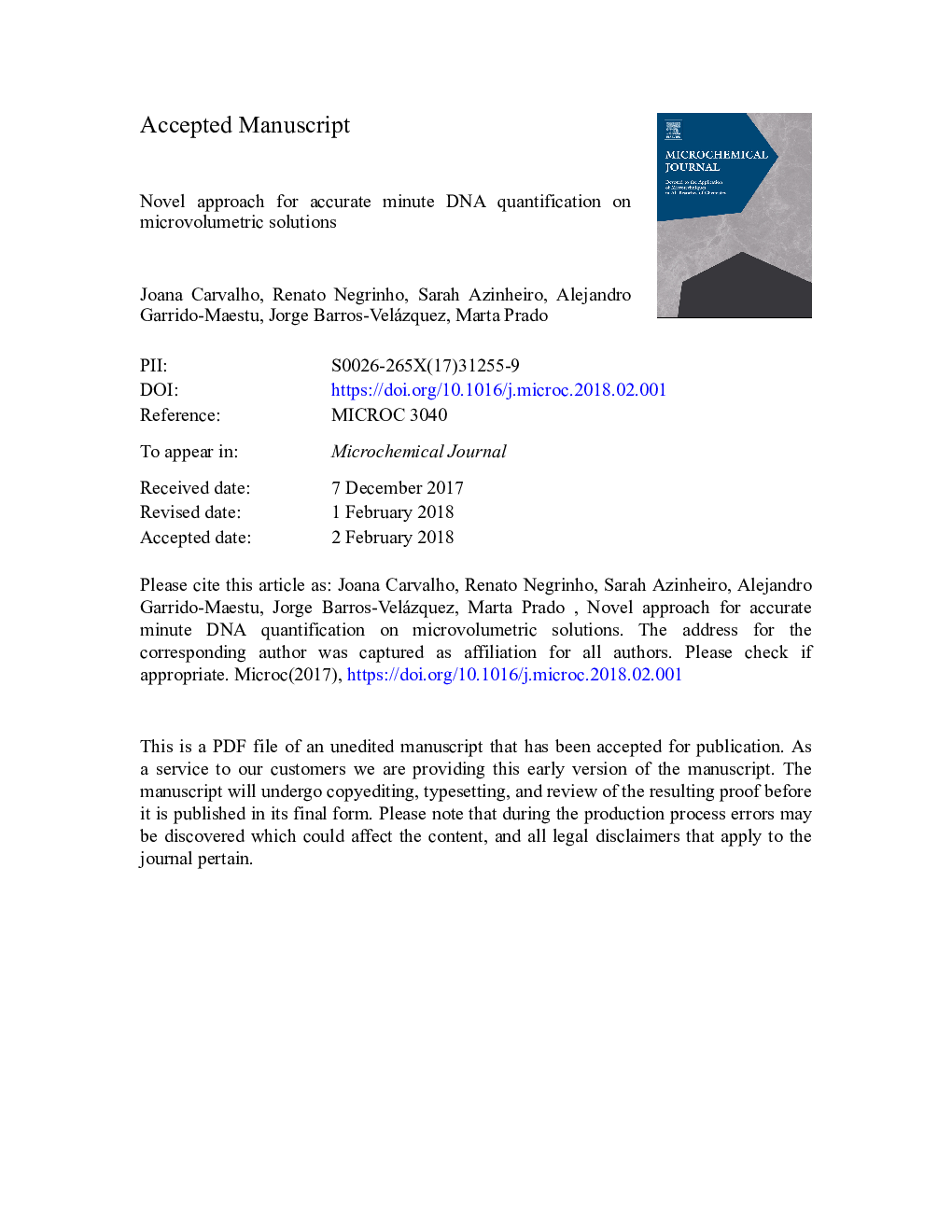| Article ID | Journal | Published Year | Pages | File Type |
|---|---|---|---|---|
| 7641040 | Microchemical Journal | 2018 | 30 Pages |
Abstract
The optimization and evaluation of the performance of microfluidic devices for DNA purification requires the use of a reliable DNA quantification method. The samples collected from these devices usually have small volumes and, in the case of food, forensic and environmental applications, these samples are also complex, frequently containing highly fragmented DNA and minute concentrations. Therefore, combining a PicoGreen® assay with a microvolume fluorospectrometer is a popular technique for DNA quantification, providing highly sensitive quantification with minimal consumption of sample. However, this method has limitations, such as being affected by the degree of fragmentation of DNA and by the presence of some compounds commonly used in DNA extraction and purification protocols. In this work, these limitations and their influence on the accuracy of the quantification method were evaluated. Low molecular weight salmon sperm DNA was selected, being less purified and more fragmented than the λDNA standard most frequently used. It was shown that the standard curves generated with λDNA were not suitable for the quantification of fragmented DNA, such as DNA from highly processed samples and/or samples that have been exposed to harsh environments. In addition, a mathematical model was developed to find a better adjustment for the standard curve, for the salmon sperm DNA samples. This approach can be used as a tool to overcome important limitations found in this quantification method, allowing to include more data in the standard curve or test different mathematical models to better fit the standards data.
Related Topics
Physical Sciences and Engineering
Chemistry
Analytical Chemistry
Authors
Joana Carvalho, Renato Negrinho, Sarah Azinheiro, Alejandro Garrido-Maestu, Jorge Barros-Velázquez, Marta Prado,
